A Better Future for the Planet Earth

Malin Falkenmark Interview Summary
Malin Falkenmark (Sweden)
Professor of Applied and International Hydrology
Senior Researcher at Stockholm Resilience Center,
Senior Scientific Advisor to the Stockholm International Water Institute (SIWI)
Born in Stockholm, Sweden (November 21st, 1925)
Childhood
Young age to teenage
As the oldest of five siblings, I was born in Stockholm in 1925. My father was a professor of law, specializing in the economic field, and it was a very strict childhood. I was brought up like a typical girl in the 1920s and 1930s.
Although my father was stern, he tried to cultivate my future potential. I was good at languages, so they thought that I was going to be a translator or something similar. In school, I studied Latin. I wanted to study Greek as well, but there was not the necessary number of pupils and so I was offered mathematics instead. Then it turned out that I was very good at mathematics; I was better than the teacher and could solve the questions that he could not. Instead of continuing with Latin and Greek at university, we decided that it would be better for me to develop this ability.

With brother and sister. Falkenmark on the right.
Entering University
I started to study mathematics, physics, and chemistry at Uppsala University. My father contacted one of his colleagues at the university, the professor of mathematics, and organized a meeting where we discussed the best direction for my future. The professor gave me two options: either I should study mathematical statistics or mathematics and physics; I chose mathematics and physics. In this way, my father redirected his plans for my future. In comparison with high school mathematics, managing university level mathematics was very difficult.

Falkenmark (far left) with friends at university
During the summer, we spent time at our holiday home and often went sailing as a family. My father had a motor boat in which we went to Finland. My brother also had his own large sailing boat, which I took out for one week with some friends. While we were out, I fell off the boat. Fortunately, my response was quick enough that I could manage to crawl up to the boat, so I was not left behind. These are still very dramatic memories in our family.
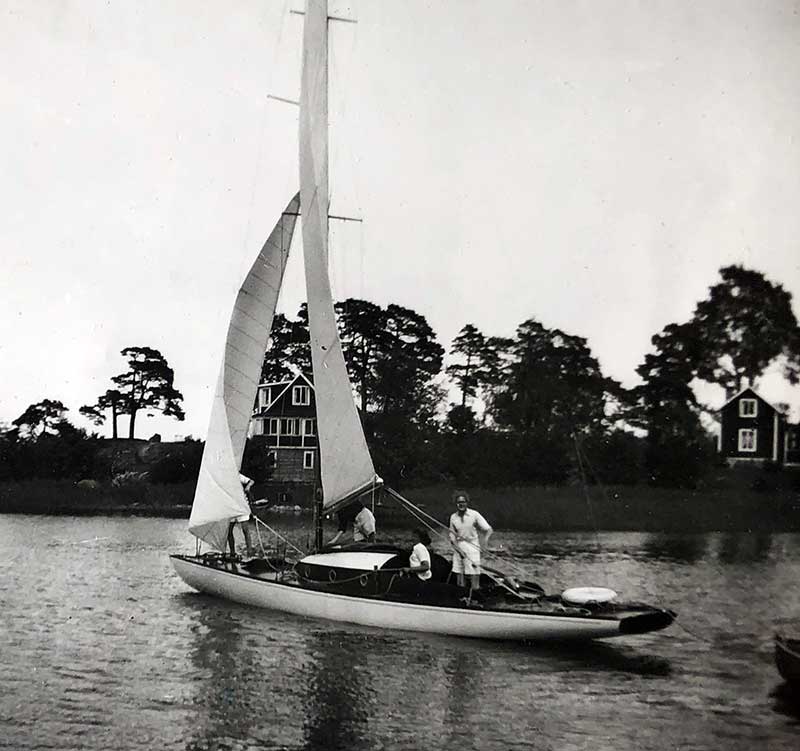
Although I enjoyed sailing, at that time I was still interested in natural phenomena. I continued studying mathematics, physics, and chemistry and finished my master exam in 1951. Afterwards, I worked as an assistant at the Stockholm Royal Institute of Technology.
Encounter with water
Entering the Swedish Meteorological and Hydrological Institute (SMHI)
My life has been full of serendipity; chances have directed my life. One example is how I came to SMHI. When a friend from the university called me up and I told him that I was extremely bored working as an accounting assistant, he recommended that I look at job advertisements in the newspaper. When I went back home and looked, there was a posting from SMHI. That was how I came to SMHI, when I was 28 years old.

Research for SMHI (1950s)
At SMHI, I measured the local environmental impacts of hydropower development on rivers and lakes. In particular, my work was concerned with how the warm drainage water from the hydropower plant affected the frozen river in winter. My role was to write reports to the water courts assessing the seriousness of the loss for local people. The warm drainage water from the hydropower plant flowed into the lake, which then flowed into the river. Because the hydropower plant constantly emitted warm water, the ice on the river melted. These factors created problems.
The local people used the river ice for transportation in the winter, and these routes were damaged by the warm water coming out of the lakes. This created conflicts. When I started work on this issue, I was not aware of the conflict, so all I could do was to do my job. Now I think that I worked with environmental impact before the existence of the word.
After the war, many power plants were built, and later on my tasks at work were concerned with plant efficiency. It was an application of physics and it was new, so the work was exciting to me.
Being a female researcher
I was in the first generation of women who graduated post-university studies in the 40s and 50s and started to work. Although today, 50% of SMHI staff are female, at that time I was the first female hydrologist in the ice department. However, the men were not so appreciative. The job required hard physical labor on the ice. Thus, hydrology was for muscular men. For example, we needed to use heavy equipment, so I needed altered, specially designed equipment that was less heavy. Also, there was a man who was in charge of facility management, and he didn't want to give me a key. Perhaps he thought I was not trustworthy because I am a woman.
But there was no other option. Whenever a problem occurred, the way to meet it was to stand tall, literally. Because I am so tall, that was very effective. The man responsible for the key was much shorter than me!
Studying water
Returning to university to study hydrology (1954)
My bosses in SMHI found that I was quite skillful at writing my reports to the water courts. Therefore, they proposed that I return to university in order to study hydrology*1 and hydraulics*2. I hadn't studied hydrology previously. I became more interested; working with ice required more knowledge in physics than in hydrology, but research at SMHI about effectiveness and the revenue ratio in the water business required that I understand hydrology. Additionally, we did studies regarding the efficiency of hydropower plants; that was, of course, hydraulics. Because of the types of tasks that SMHI had, and where they put me, there was not a specific moment when I switched from tasks concerning ice to water. So, while I worked at SMHI, I started to learn Hydraulics at the Swedish Royal Institute of Technology (KTH) in 1954, and then I started to learn Hydrology at Uppsala University.
*1 : The study of the properties of water on the ground such as rivers, lakes, and groundwater, its changes, and relation with the environment from the perspective of water circulation.
*2 :The study of the properties of liquids, especially water dynamics and energy, from the perspective of engineering applications such as mechanical design.
Being a mother, being a researcher

With husband (on the left)
I had three maternity leaves for three children. Colleagues of mine all considered my maternity leaves positively, which were beautiful memories for me. We had always a nanny at home, a woman with two children who lived besides us. Therefore, my children grew up at home and not in the childcare center. This was the solution to maintain balance between my family and research. God must have helped me. I did my job and I was also a mother; that was everything. Of course, it was difficult, and I collapsed twice while my children were young. That's the way it worked out. Also, I had a husband who helped me out. That's very important. The two of us were able to share parenthood.
Studying the importance of water on the global scale
Joining the International Hydrological Programme (IHD)
After I came back from the third maternity leave, the unexpected happened; I was asked whether I could switch jobs and go to the National Scientific Research Council to take responsibility for Swedish participation in the International Hydrologic Decade, because the guy who was supposed to do that job had gone to work at the United Nations. That was the second serendipity. It was an international project, and the beginning of my international career.
I became an Executive Secretary of the Swedish National Committee. The scope of my work suddenly expanded to the whole world, and this role lasted for a decade, so my job at the IHD broadened my perspective on water. One thing that was important for me was a huge 7 year project concerning the water balance of the Baltic sea; every country was in charge of one of the hydrological elements, which included precipitation, evaporation, water storage in the Baltic sea, outflow through the Danish strait, and so on. I was in charge of putting all these aspects together in a report at the end. My perspective in regard to water developed further.
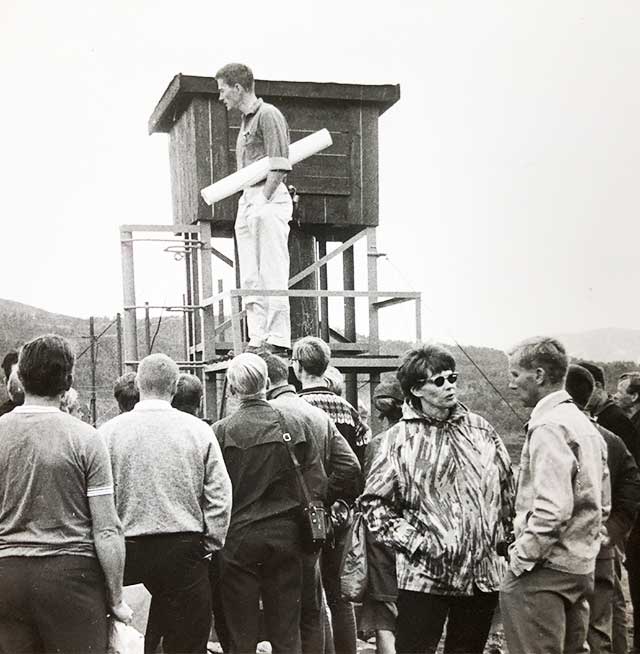
At the IHD meeting
The mentor who gave me a perspective on global water scarcity
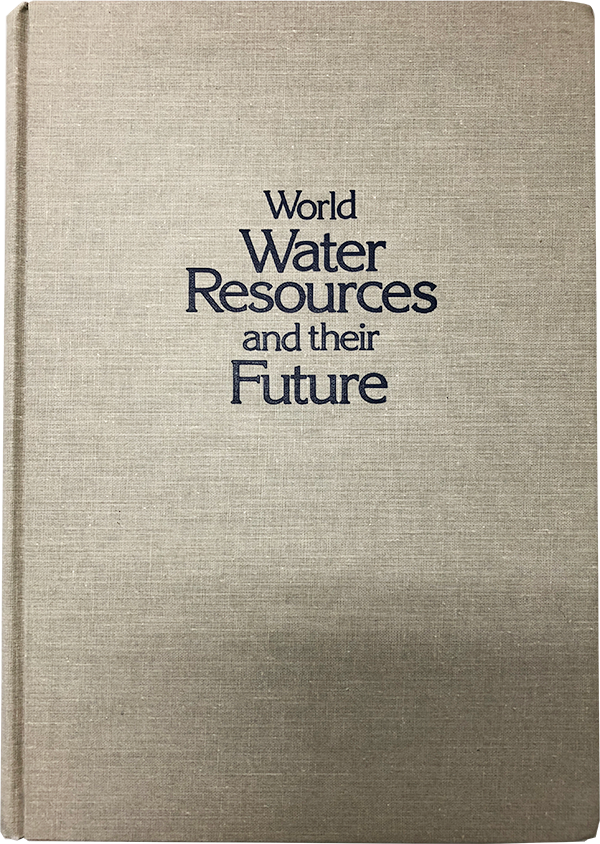
I came across the book "World Water Resources and their Future" which describes water scarcity and was written by my academic mentor, Prof. M.I. L'Vovich, professor of geography at Moscow University. Differences of water transfer between regions had not been considered very much at that time. The book summarizes data that L’Vovich had compiled from each continent, and demonstrates differences in terms of hydrological conditions. In it, he describes water as the life support system of humanity. He described and mapped the entire world from the hydrological perspective. Given the circumstance that even though in the 60s, the field of hydrology did not yet exist, and only personal interests in this particular subject drove a small number of scientists, his book had a significant impact on many scientists. This was a fundamental book for me through life. I have quoted from it and continued his research, and so far, I have written 500 papers. It was complex material, but I tried to understand his messages and consequently developed them further.
Although I have never met L’Vovich, I got his phone number while I was at IHD and called him about a question I had. I was happy even though it was not face to face contact. He became interested in me because I was very enthusiastic about academic issues. After that, he forwarded me his new books.
Developing the Falkenmark Index
Knowledge of the aquatic environment in developing countries
In the IHD project, I was particularly interested in reports from developing countries. There are reasons for these countries being well behind, and I realized the association with water scarcity. I noticed the problems associated with water in Africa, because I read thorough reports dealing with this issue. If there is no water, countries cannot even begin to develop. Countries in the northern hemisphere had been heavily involved in helping developing countries without knowledge of regional differences. Many people thought the conditions in developing countries were similar to those in the northern hemisphere: that water was not a problem, there was no water scarcity, and there was plenty of water.
After I came across the book, "World Water Resources and their Future", I became very interested in regional and global differences in terms of hydrology. I thought that there might be differences in the amount of water availability, depending upon the region. I continued to develop this concept based on the book.
Expanding awareness of the importance of water
In the early 1970s, United Nations meetings were often held. In one of those meetings, there was a report on food and population, which described how many people could be fed by the world’s resources. This had implications for the largest population that the world could support. Two optimistic professors from some technological universities said that the world could accommodate a human population of 40 billion. I didn't believe that because I felt that they hadn't accounted for the importance of water for life. That was when my interest in the world’s water carrying capacity started.

In the late 1980s
Population growth was extremely rapid in the 1970s and 80s. Therefore, the water capacity per person decreased. Ultimately, I thought water scarcity should be understood as the maximum population possible in relation to the available amount of water in each region. Then, one of my colleagues and I wrote the first report of its kind on the water carrying capacity of the world, which was delivered at a United Nations conference. We further decided to write a book on the topic in order to appreciate the importance of water for human life. The report, "Water for a Starving World," was translated into English in 1977, and was one of the critical reports in the United Nations conference on water.
Developing the Falkenmark Index representing water scarcity
From the 1970s to 1980s, there were severe droughts, and many people died. Because of the importance of water scarcity, I came up with a scale that shows water scarcity, and how water becomes increasingly scarce along with increases in human population.
After further research into different regions of the world, I found that some states in the U.S. had 6,000 people per flow unit and had started to have water scarcity problems. As I looked over different reports, I found that for an annual flow of 1,000,000㎥ water, 1,000 people was the threshold at which the situation becomes critical. I found that if population exceeds one thousand people per flow unit, there was chronic water scarcity. For characterizing water scarcity, I introduced three intervals with 1,000,000㎥ as a flow unit: those with less than 600 people, those between 600 and 1,000, and those over 1,000.
Thus, I created the water crowding scale. Then I made a diagram consisting of water resource availability and the population that can be supported by the available water, the so-called the Falkenmark Index. This index describes water scarcity that is defined by the supply and demand of water. The amount of water that society needs determines the water demand . When the population increases, the water demand grows, crowding increases, and the water availability per person decreases. Thereby, the Falkenmark index made it possible to compare the situations in different parts of the world, and how stressed they are in regard to water resources. Using population per flow unit places people in focus, and the rapidly growing population made the approach essential.
Concept of the Falkenmark Index
Noticing another type of water
"Green Water" , invisible water for Africa
Africa is an arid continent, which cannot be fed by irrigated agriculture, as there is not so much water in the rivers. Although there are river corridors through the African continent, the farmers who live far away from those corridors cannot use the rivers for water; they cannot irrigate, which reduces their harvest. Hence, famine is a serious concern. The continent’s population is doubling every 30 years; the population was one billion in 2010, will be two billion in 2050, and is projected to be four billion in 2100. How is the population going to get food?
After doing some research throughout Africa, I found distinctive regional features. There are no shortages of water in tropical rainforest areas such as in Congo. However, there are shortages of water in the Savanna region. So, I made maps using different colors to display certain issues, and the same pattern became clear. (Reference maps)





The black-colored countries in Map 1 had severe famine during the droughts in the 70’s. Furthermore, we can see these countries had problems in terms of the shortage of water that is visible, i.e., "Blue Water", as shown in Map 5. From Map 4, it is possible to see soil problems (infiltration disturbance), as well as drought problems. Additionally, Map 3 (drought year variability) shows the frequency with which droughts occurred in each region. The same patterns are visible in all of these maps. I realized that it is necessary to consider two types of water, not just the liquid water in the rivers; it is also necessary to consider at the water in the soil. This is particularly the case for food production, because crops don't grow in the river. If there is no water in the soil, plants would not be able to grow. Plants absorb water through the roots. And that water rises up through the stems, after which it is emitted into the atmosphere, while the stomata absorb carbon dioxide. Therefore, the photosynthesis process is driven by water taken in through the roots. I suggested this new name for the water in the soil. I said that we should call it "Green Water". Afterwards, I continued to consider Green Water in relation with food production.
Recognition for the discovery of Green Water
When I worked for the IHD, I differentiated between Green Water and Blue Water, and focused on water in the soil. My concept consists of the combination between water in the soil and plant production. I found that it was absolutely central for food production. In January 1993, I proposed the concept at a meeting of the Food and Agricultural Organization, and it was well-received.
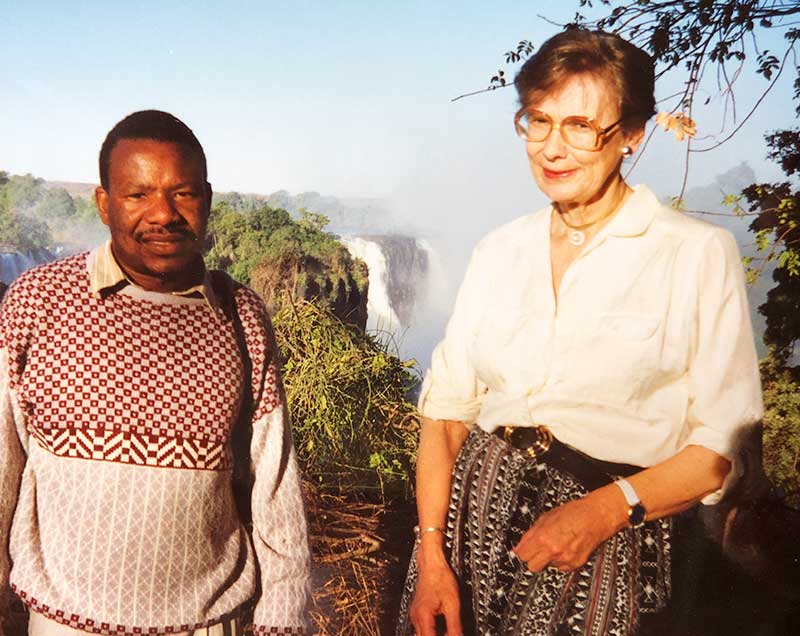
At Victoria Falls (1990's)
Soil fertility is important for plant production. However, whenever soil fertility had been discussed previously, it was only discussed in terms of the chemical contents of the soil. Soil water content, which makes chemicals accessible to the roots, was not mentioned. This is still an issue today, and there are reports that do not make any reference to water. This is the way that the scientists have been looking at soil fertility; they have taken water for granted. This is because the concept was developed in a humid climate, where it was not necessary to discuss water. This is the reason that the soil water did not attract any interest.
This situation has not changed much. Additionally, all development work has been carried out by people from the north, where water is taken for granted. In the late 80s, I also worked with the World Bank, where I found a book at the book shop. It was written by a frustrated agricultural professor, who realized that there is a difference between the situation in the north and that in developing countries. Thus, I found the first sign that I was right. I was on the right line in regard to pinpointing this water scarcity.
Bringing the "Green Water" concept to the world
Passion for Green Water
Back to those two professors of Technology from the early 1970s who believed that the world could feed 40 billion people. I didn't believe that. Population growth opens the issue of food production, and there won't be any food without green water. Full stop. Population growth is what has driven me. My question is how many people can actually be fed by the world’s resources.
For example, in Africa, only 30% or so of the rain is used, but 70% is left untouched. If this untouched water can be stored during rain storms, people would be able to use it during dry spells. Therefore, rain harvest is the future of Africa and the key to cope with its drastic population growth. This is the reason for my interest in green water.
SDGs and Green Water
The Falkenmark Index shows people how much water is needed. This is in regard to the deficiency and excess of Blue Water, which relates to domestic water supplies and industrial water supply and energy production. However, the Sustainable Development Goals (SDGs), adopted at the United Nation summit in 2015, are concerned with food production, which relates to green water. That being said, there is a problem in that this distinction was not understood by those who formulated the goals. Therefore, green water is what we have been focusing on during the World Water Weeks, organized by the Stockholm International Water Institute (SIWI). We have been advancing and raising awareness of the fact that grain-fed production is key to addressing the SDGs.

Sustainable Development Goals
Several years ago, the illustration for the SDGs was redrawn so that it consists of three levels: Biosphere, Society, and Economy. The Biosphere level, which is critical for sustainable development, includes four elements, one of which is water. The Society level is dependent upon the natural system, i.e., the Biosphere, and the top level contains the Economy. Thus, water is now assessed as a critical element and is placed at the bottom level. That was our victory a couple of years ago. I am trying to influence the people who are working on Goal Number 6*3 that they must include green water, but I have not yet achieved this. People who consider the SDGs have to understand that water is the Achilles heels of Africa. They have to realize where and how much water there is. They have to understand that water is the blood stream, so to speak. But of course, Africans understand it themselves. That is to say, the farmers understand that they need water and of course they want to irrigate their crops. Therefore, I think that scientific development is still problematic in this regard. There are 1.3 billion people in Africa. Where are they going to get water? While it is necessary to change the mindset about water supply, and antiquated techniques are still being used, the water is becoming scarcer and scarcer.
*3 : One of the 17 Sustainable Development Goals (SDGs). The 6th goal is to "Ensure availability and sustainable management of water and sanitation for all."
Continuing interest in water even at the age of 92
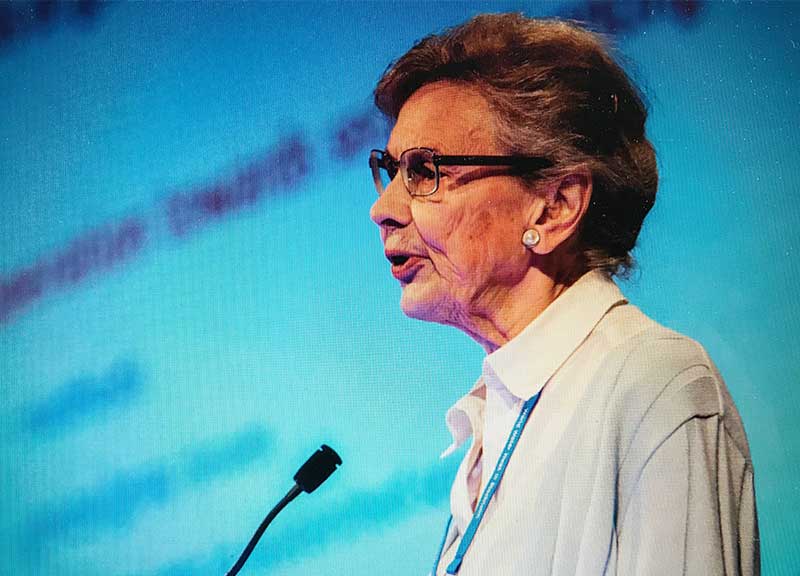
Initially, the field of ecology did not include water. Rather, it was a kind of science that was developed by biologists, and which was not open for new ideas hydrology at that time. The ecologists were interested in fish and aquatic ecosystems, but when they discussed terrestrial ecosystems, including trees, plants, and food, water was not considered. That is the present situation. Now we are trying to include water and to make ecologists aware of the fact that water is the blood stream of the biosphere. How is it possible not to consider water? If I would stop and die, all these ideas would vanish, but now I have received the Blue Planet Prize and my concept has been accepted. This is why I continue my work, although I am 92.
I have one message for schools all over the world: they must include studies on water. This is in relation to the water situation, the basis for human survival. Children should understand where life comes from, because children love water. In particular, children under 6 years old play in puddles with their rubber boots, build sand castles using water, stop small water flows, and so on. They are already interested in water, and so we have to teach them that everything comes from water.